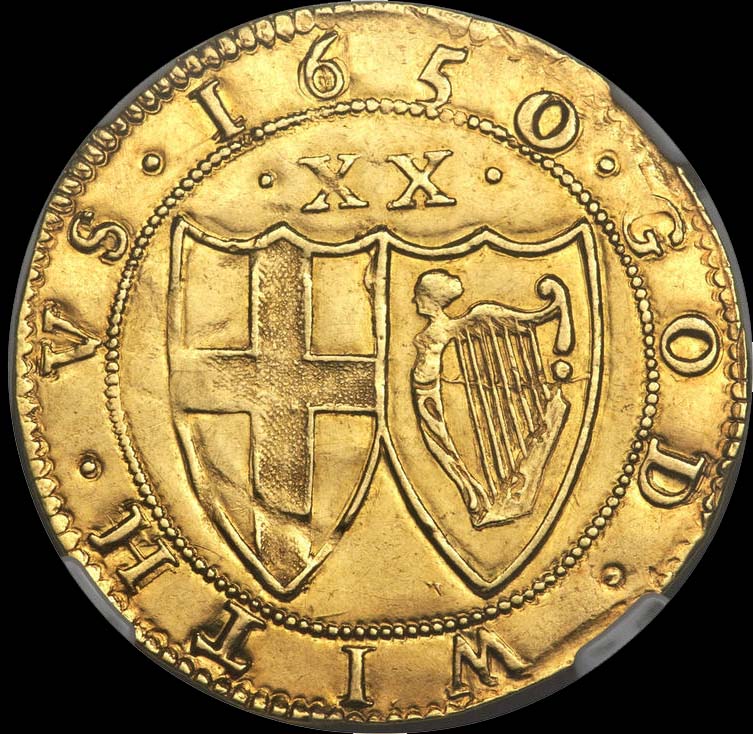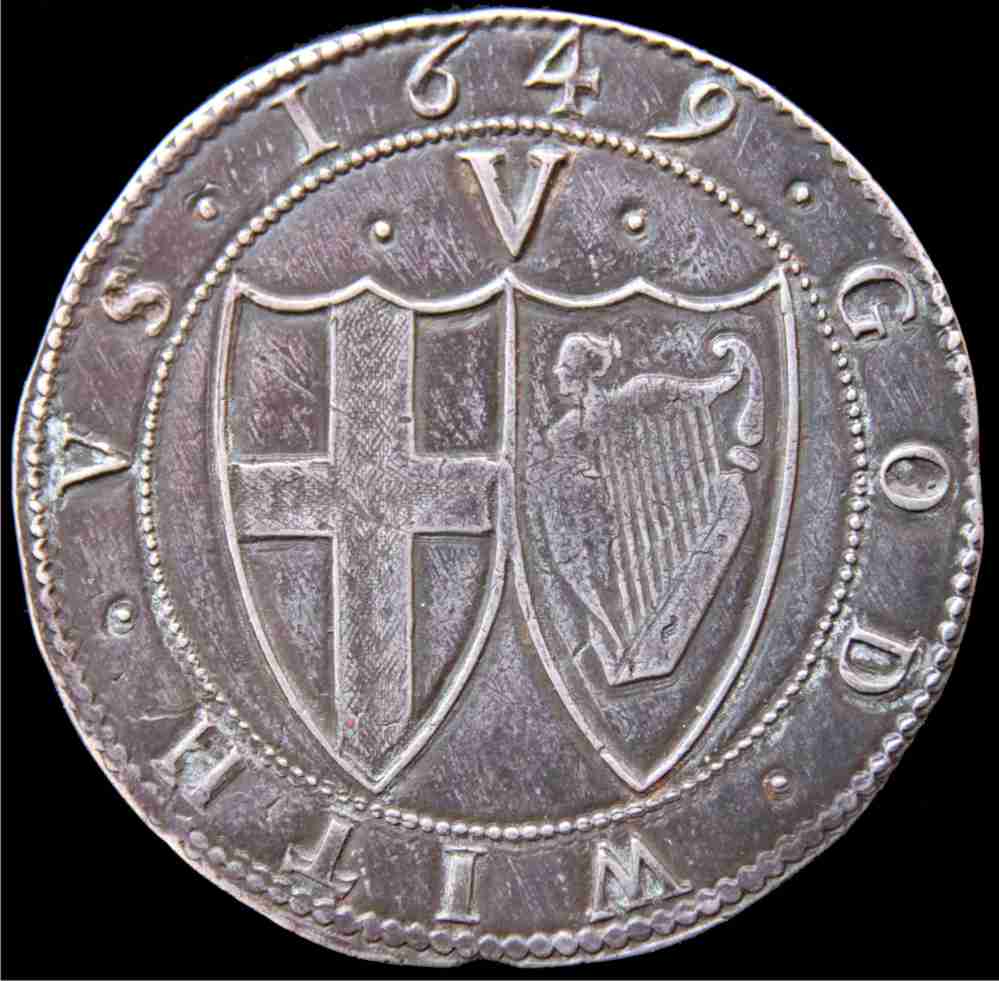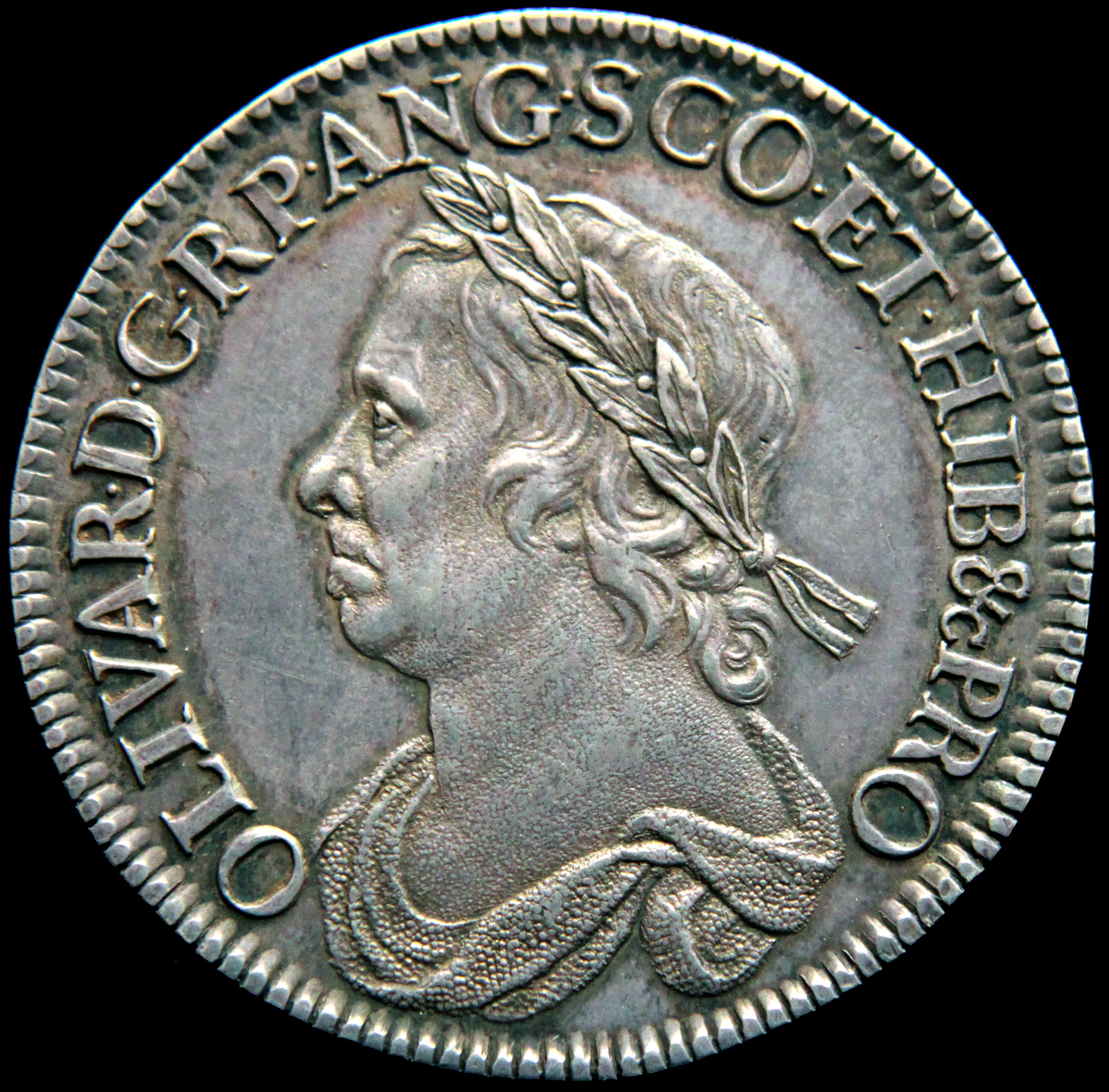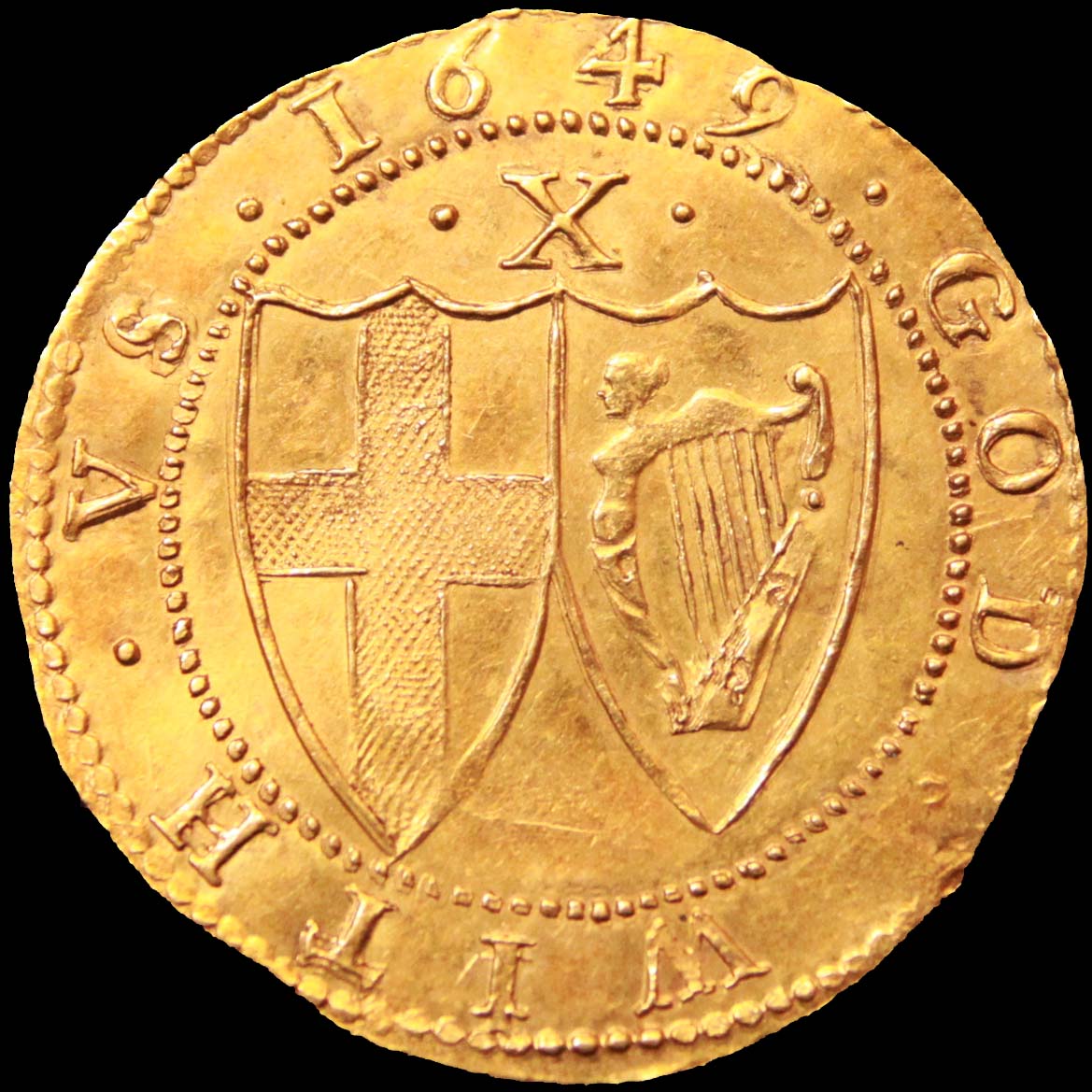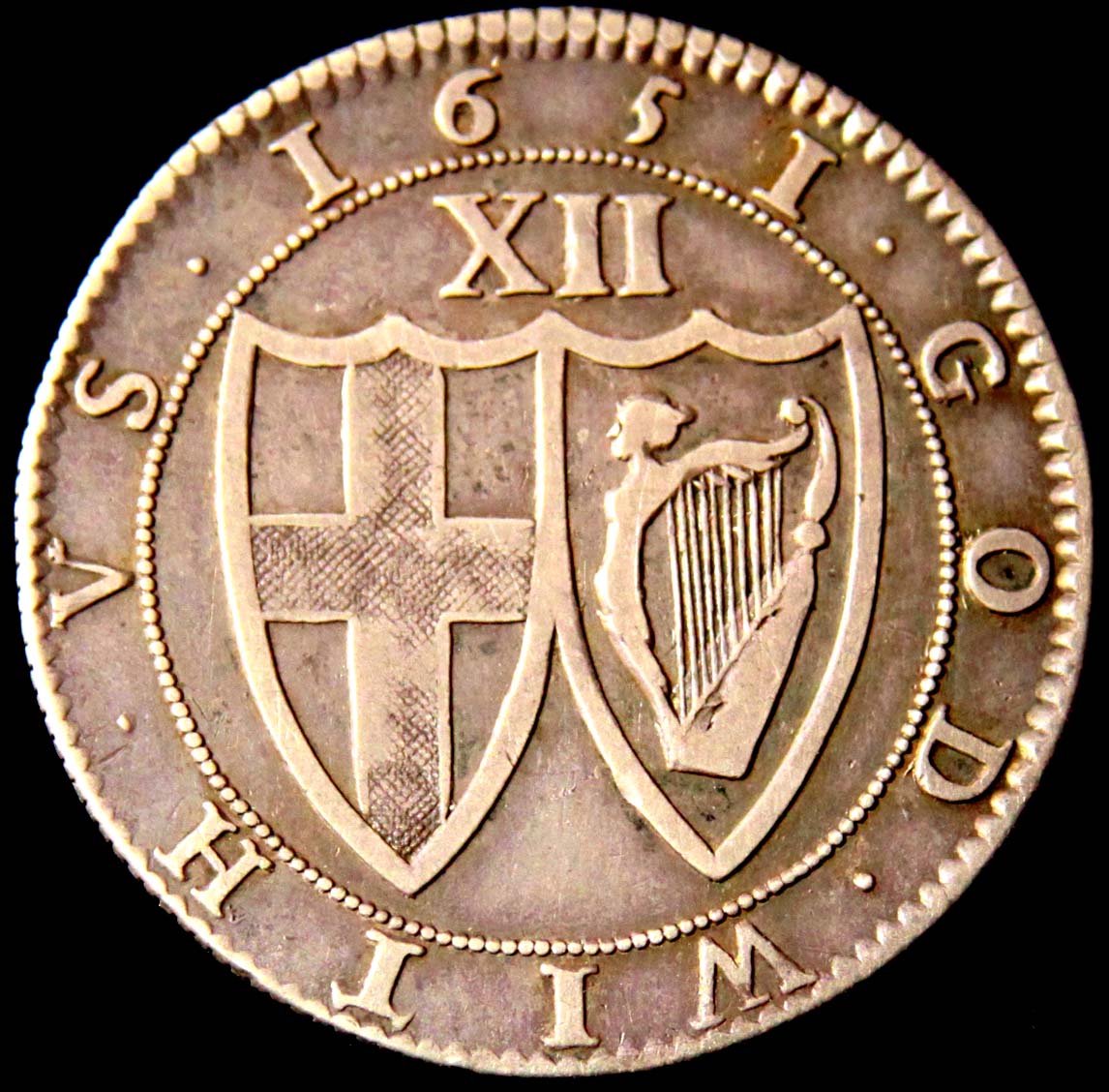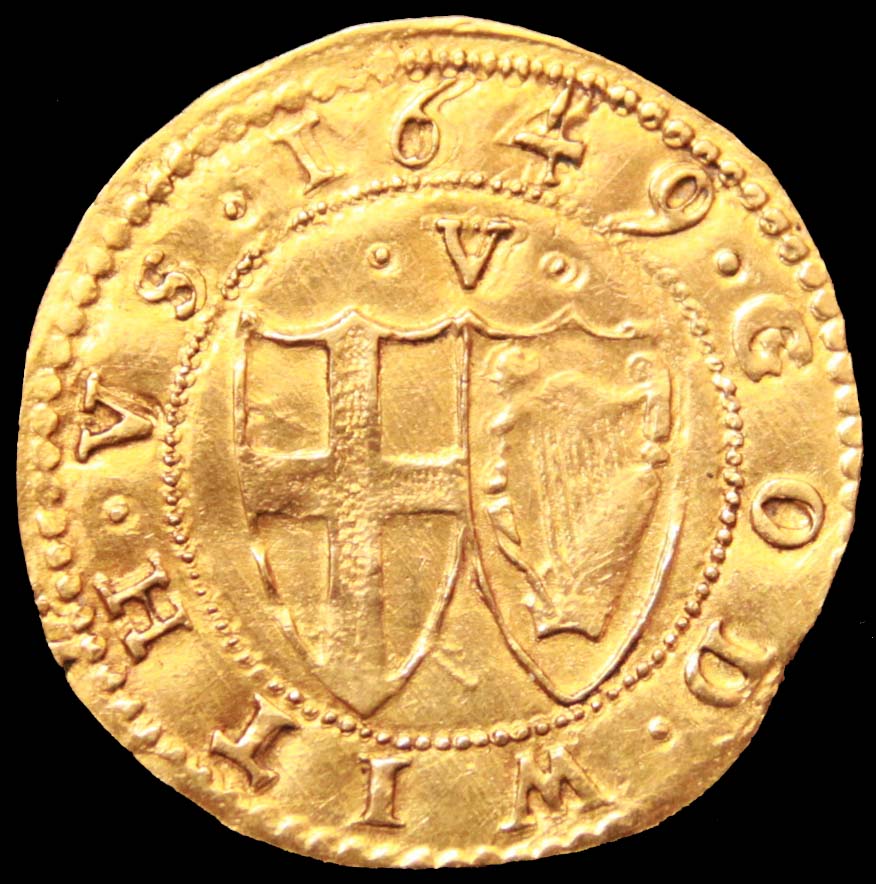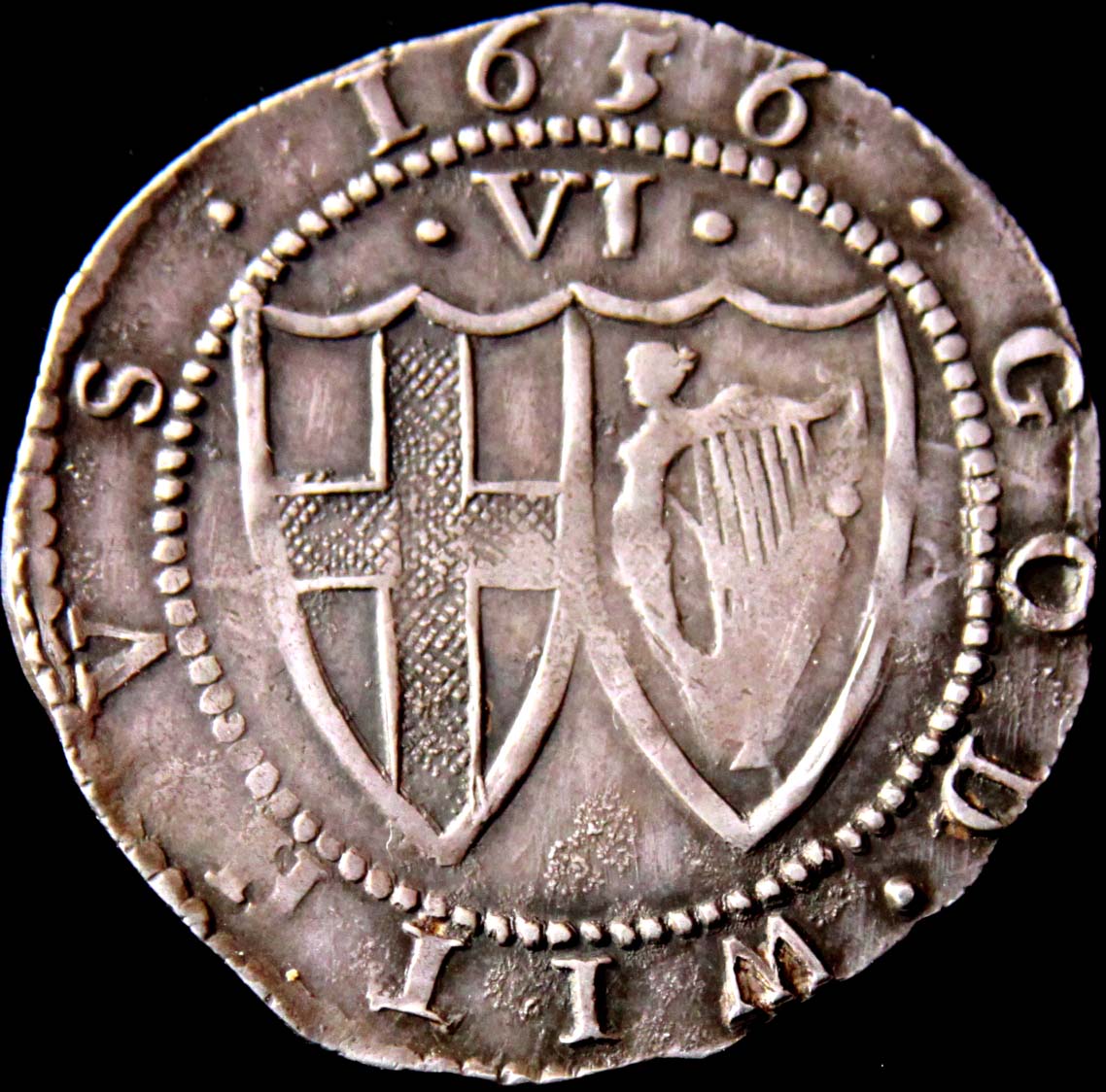|
370 years is a very long time. In normal circumstances coins made in 1649 would have since spread to the four corners of the earth.
The Commonwealth Period was like no other time in English History. It was a period of 11 years sandwiched between the rule of Charles I who was eventually defeated in Civil War, tried and executed for his crimes, and Charles II at the Restoration of 1660. While this war was waging across the country the population was forced to take sides - Royalist or Republican. We had two of almost everything including armed forces. Two Parliaments one sitting in Oxford and one in London. After 1642 we had money being minted in London for the Parliamentarians and Royalist mints both in Oxford and Provincial locations, like York, Chester, Bristol and Exeter to name a few which remained active till Pontefract surrendered in 1649. In those days money was power, was metallic silver or preferably gold. Forces from both sides toured the countryside looking for plunder to support their cause. Charles endeavoured to move metal and supplies to his headquarters in Oxford, while the Parliamentarian forces attempted to block shipments. Notably a shipment of gold and silver from Cambridge was intercepted on it’s way to Oxford and re-directed to London. Soldiers on both sides had to be paid so this activity never stopped. Provincial fortifications like York had to have money to pay defending soldiers. Loyalty had to be bought with money, food and shelter. Local residents supported the cause by donating gold and silver plate which could be converted into coinage.
|

